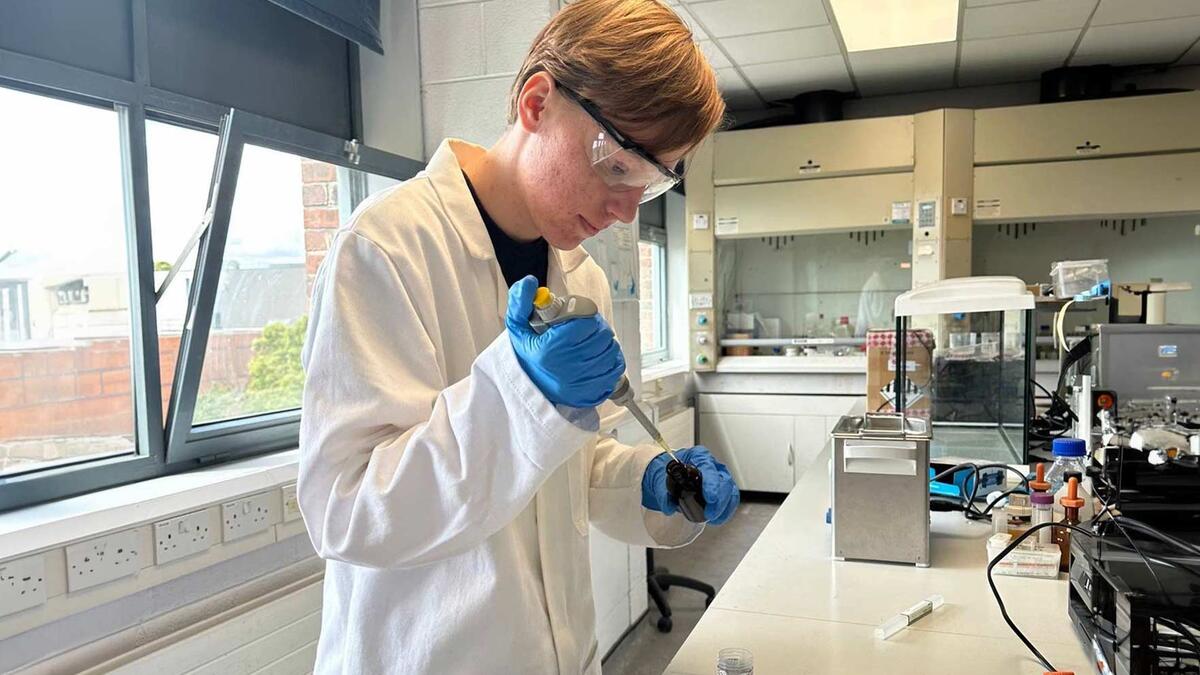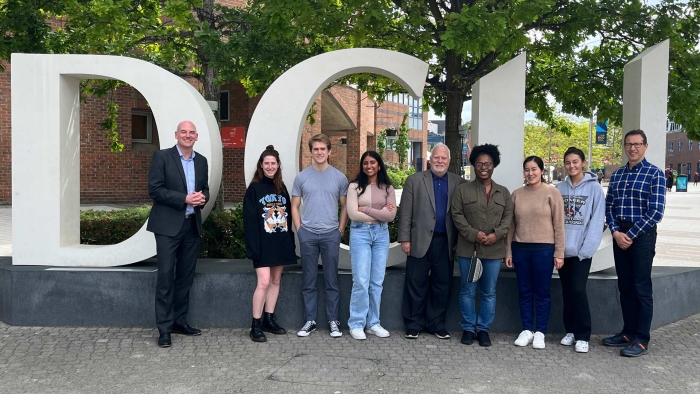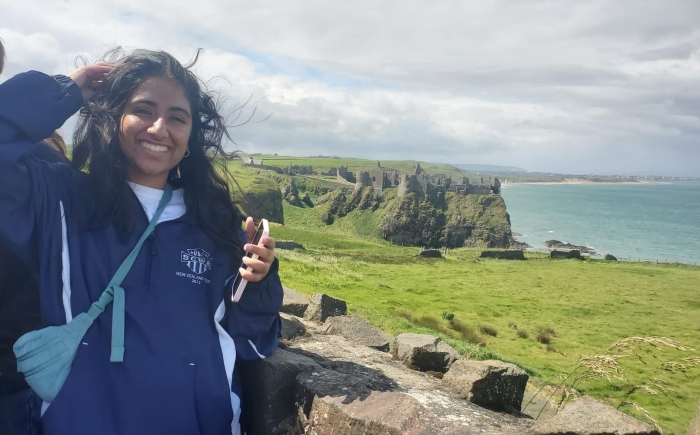International experience empowers engineering students

Asher Hendricks, a Fulton Schools chemical engineering student, conducted research in the Ireland IRES program. Photo courtesy Asher Hendricks/ASU
Editor’s note: This story has been edited for length. Read the full-length feature on Full Circle.
An old saying suggests a change of scenery will provide new perspectives on life.
A current trend in higher education similarly encourages students to enhance their knowledge and skills through immersive and intensive hands-on learning in environments far from their familiar surroundings.
That alluring invitation is proving to entice students to the edifying opportunities offered by the International Research Experiences for Students, or IRES, program from the National Science Foundation.
IRES strives to bolster U.S. leadership in science and engineering research and education and strengthen the nation’s economic competitiveness by expanding training opportunities for the next generation of research leaders.
Extraordinary research experiences
Students in the Ira A. Fulton Schools of Engineering at Arizona State University who participated in the six-week IRES sessions the past two summers attested to the benefits of collaborating with faculty researchers and fellow students abroad.
Movinya Gunatilaka, a computer systems engineering student, was among six Fulton Schools students who went to Dublin City University, or DCU, in Ireland in 2022. The group was a part of the contingent led by the Sensor Signal and Information Processing, or SenSIP, Center, directed by Andreas Spanias, a professor of electrical engineering in the School of Electrical, Computer and Energy Engineering, part of the Fulton Schools.
The SenSIP IRES summer sessions have focused on machine learning and sensing devices, which made Gunatilaka skeptical about signing up.
“I had zero experience in those areas,” she says.
However, by the end of the session, her concerns had given way to excitement.
“I absolutely loved it because of all the things it taught me,” Gunatilaka says. “Now, every week I’m talking to other students about IRES and trying to get them to sign up. It’s such a good experience for students to learn the fundamentals of machine learning and see what the world of research and academia is truly like.”
Solid foundations for bioengineering careers
Fulton Schools chemical engineering student Asher Hendricks, whose interests include biosensors and wearable technologies like smartwatches, wanted to increase his knowledge of machine learning and artificial intelligence.
For his IRES project at DCU this past summer, he developed sensors to test iron levels in blood more rapidly and accurately.
“I got a lot better at thinking of every possible variable that could impact my experiments,” Hendricks says. “My research, presentation and public speaking skills were definitely improved by this program.”
Fulton Schools biomedical engineering and ASU’s Barrett, The Honors College undergraduate student Grace Billingsley, who participated in the Ireland IRES program in summer of 2022, says the work deepened her knowledge of medical advances through the development of machine learning algorithms and the use of MRI technology and computer programming to produce more accurate health and medical diagnoses than currently possible.
“None of it was anything I had any experience in, and now two years later, I have a research journal publication on these topics,” Billingsley says. "It’s been very useful and has opened a lot of doors to different options that I hadn’t thought about before as career paths.”
Fostering an entrepreneurial spirit
“This program is helping students go into the early stages of their careers with a working knowledge of artificial intelligence, machine learning, biometrics and advanced sensors, which are going to be a big part of the future of health care and many other aspects of life,” says Erica Forzani, deputy director of ASU’s Biodesign Center for Bioelectronics and Biosensors and a professor of chemical engineering in the School for Engineering of Matter, Transport, and Energy, part of the Fulton Schools. “I’m seeing these students come out of this experience with a sense of accomplishment and empowerment.”
“The main reason we chose to partner with DCU over many other alternatives is that it shares ASU’s entrepreneurial spirit,” says Gregory Raupp, a professor of chemical engineering in the School for Engineering of Matter, Transport and Energy and director of the Fulton Schools Ireland IRES program.
“We are highly aligned in our way of thinking about education, the role of universities and the importance of our research in getting new technological advances out into the world to serve society,” Raupp says. “We felt that our students will be getting a really good experience at DCU with a mix of fundamental and applied research while also getting exposure to how research is conducted in Europe.”
Plans are now in the works for the Ireland IRES 2024 summer session, which will focus on sensor information processing and machine learning for wearable devices. Details and a link to the application form are on the SenSIP website.
More Science and technology

ASU-led space telescope is ready to fly
The Star Planet Activity Research CubeSat, or SPARCS, a small space telescope that will monitor the flares and sunspot activity…

ASU at the heart of the state's revitalized microelectronics industry
A stronger local economy, more reliable technology, and a future where our computers and devices do the impossible: that’s the…

Breakthrough copper alloy achieves unprecedented high-temperature performance
A team of researchers from Arizona State University, the U.S. Army Research Laboratory, Lehigh University and Louisiana State…





